ID-DOC: general search
Here you can enter a general keyword and perform a general search.
??? What are these question marks doing here? These represent tools which we know by a Dutch or French name, but who's English name is yet unknown. Suggestions are always welcome!
If you cannot find a certain tool, or if you experience other problems with this page, please let us know at info@mot.be.
Search for: tool
Showing search results 851 - 900
1,492 results found
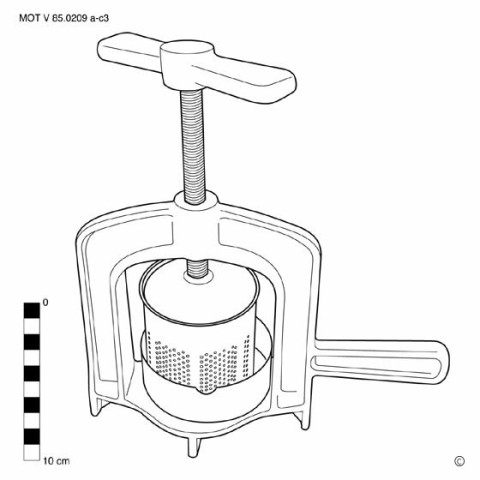
Meat press
This text can only be consulted in Dutch
<https://www.mot.be/resource/Tool/meat-press?lang=nl>
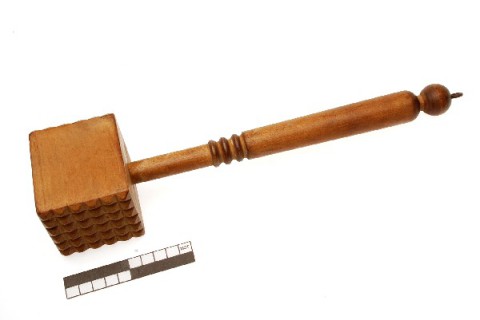
Meat tenderizer
To tenderize meat, one can use a meat pounder or a meat tenderizer. The
latter is a wooden hammer - porcelain or aluminum is sometimes used - with
a cylindrical or rectangular head with solid, pyramid-shaped buttons on
both sides. There are often larger buttons on one side than on the other;
for thick and thin cuts of meat respectively. These buttons can be cut from
the wooden head, but this can also be a stainless steel plate with buttons
attached to the face. The head of the meat mallet can also have an axe, ice
pick (1) or steak greith (2) on one side. Another model has a handle on top
instead of a hammer handle. [MOT] (1) See ''The Stanley Catalog Collection
1855-1898'': 64, 241. (2) CAMPBELL: 87.
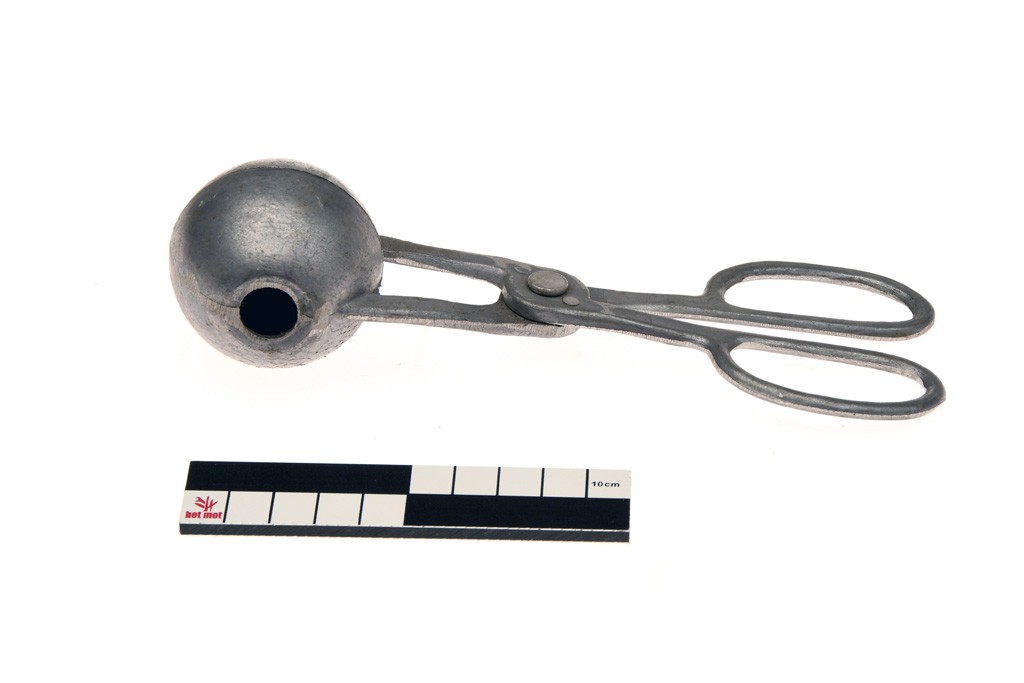
Meatball tongs
This text can only be consulted in Dutch. [MOT]
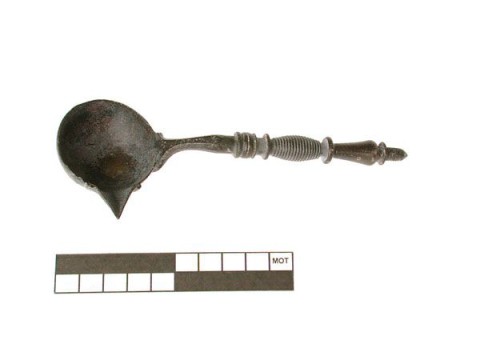
Melting ladle
A melting ladle is a small metal or porcelain fireproof spoon (approx. 15
cm long) with a pouring spout, which jewelers like the goldsmith or
silversmith use to melt wax. The wax makes a positive model that - once
solidified - will be used to make a negative cast; the again positive
casting in this mold will show the original model in every detail. See also
the melting pot. [MOT]
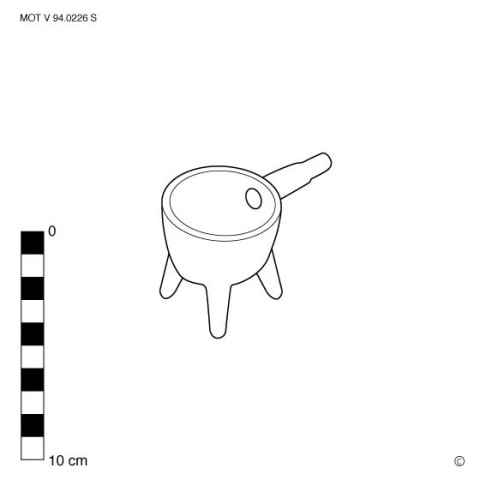
Melting pot
A melting pot or crucible is a container in which metal is melted for
soldering or casting. To take it out of the fire, you use crucible tongs.
In finer professions with small amounts of metal, such as the goldsmith and
prosthetist, it is a small metal fireproof bowl (approx. 4-7 cm diameter)
with or without legs, possibly with a handle and a pouring spout. Jewelers
use a melting ladle to melt wax. In metal foundries, larger models of
crucibles with a handle up to 1.5 meters or models without a handle are
used, which are placed in a large foundry ladle and held by two people.
[MOT]
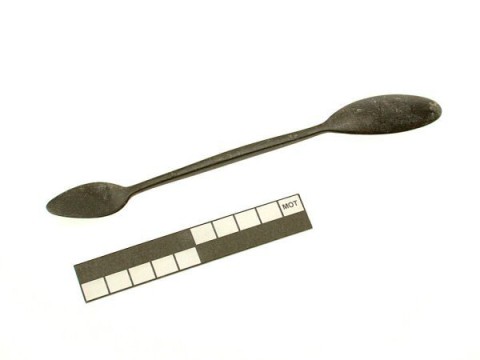
Metal modelling tool
This text can only be consulted in Dutch
<https://www.mot.be/resource/Tool/metal-modelling-tool?lang=nl>
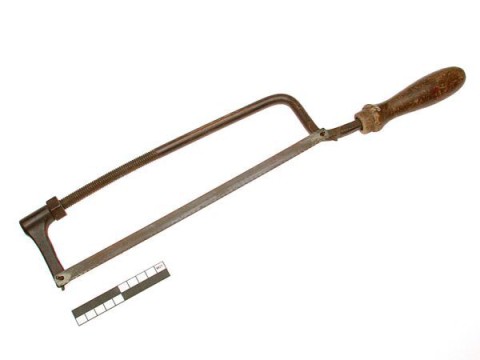
Metal saw
This text can only be consulted in Dutch
<https://www.mot.be/resource/Tool/metal-saw?lang=nl>
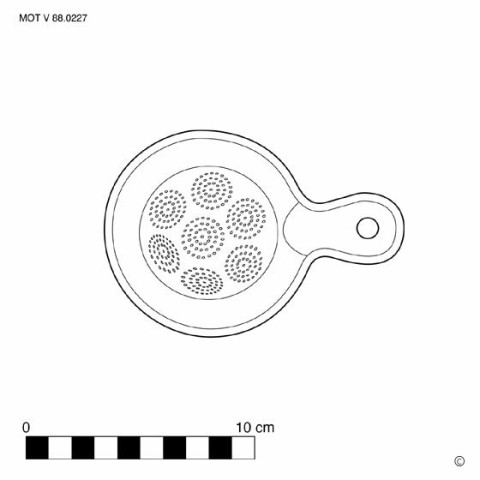
Milk skimmer
This text can only be consulted in Dutch
<https://www.mot.be/resource/Tool/milk-skimmer?lang=nl>
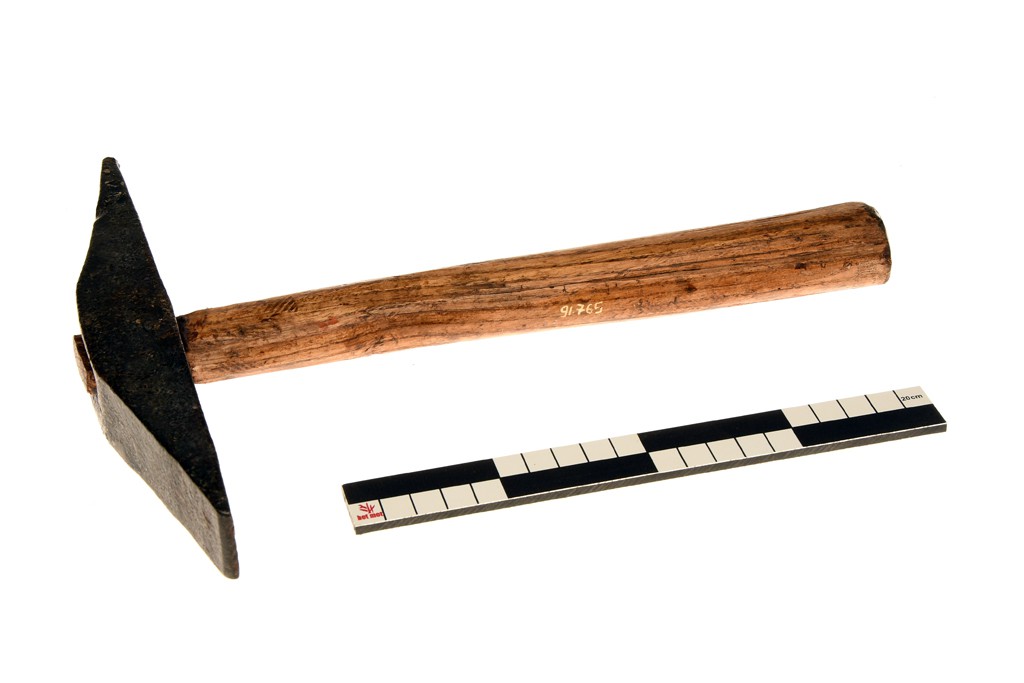
Millstone pick
This text can only be consulted in Dutch
<https://www.mot.be/resource/Tool/millstone-pick?lang=nl>
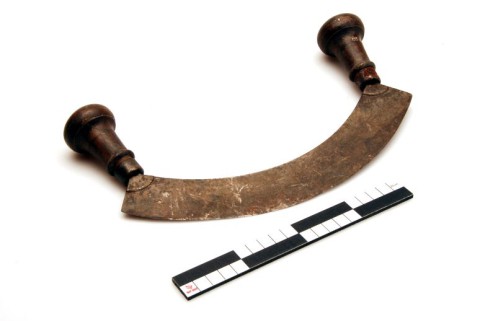
Mincing knife
This text can only be consulted in Dutch.
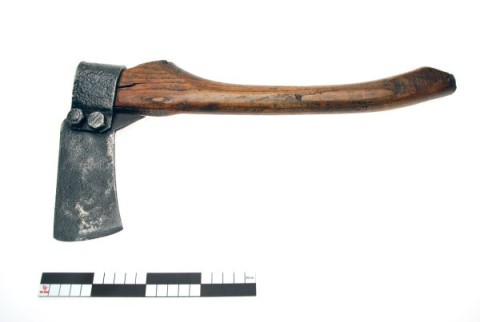
Miner's axe
The mine timberer works all the mine wood with his axe. It is a hand tool
of approx. 1 - 1.2 kg with usually a curved handle (approx. 40 cm), the
edge of which (approx. 6 cm; the riveted iron is wider: approx. 9 cm)
diagonally opposite the stem. The iron is made of one or two pieces. In the
first case it is asymmetrical at the top and sometimes ends opposite the
blade in a square hammer. In the other case, a rectangular blade is riveted
to a U-shaped piece. The latter serves as an eye. [MOT]
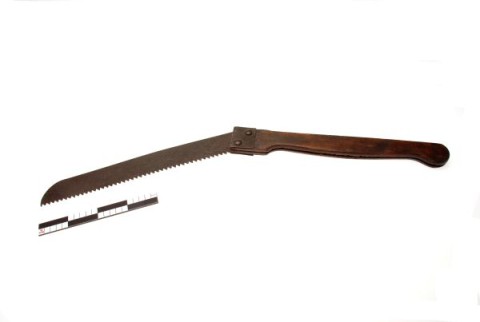
Miner's saw
Although the miner's axe is mainly used for sheeting the mine galleries, a
saw is sometimes used for this. It is a folding saw with a rigid, rounded
blade (approx. 35-45 / 4-5 cm). This blade is attached to a straight handle
of the same length by means of a spindle. The teeth enter the groove of the
handle for transport. Sometimes, however, the blade is fixed. The handle is
then shorter and the saw is carried in a wooden tube. [MOT]
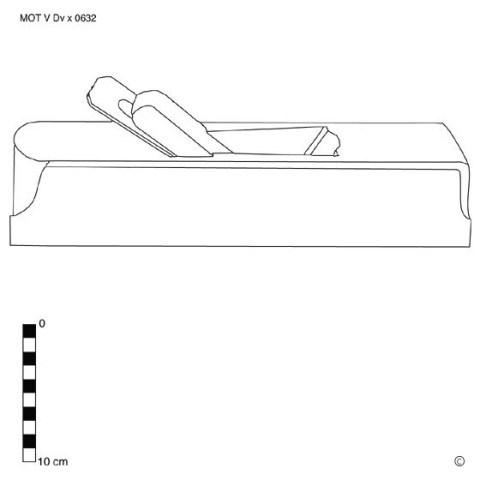
Mitre plane
This text can only be consulted in Dutch
<https://www.mot.be/resource/Tool/mitre-plane?lang=nl>
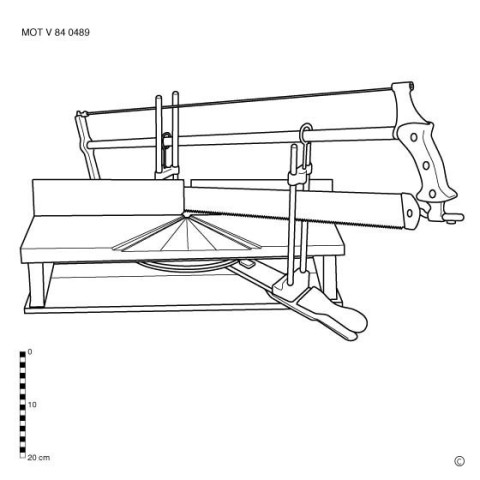
Mitre saw
This text can only be consulted in Dutch
<https://www.mot.be/resource/Tool/mitre-saw?lang=nl>
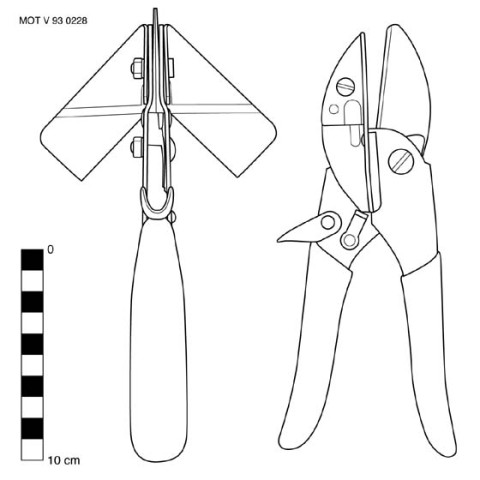
Mitre shears
This text can only be consulted in Dutch
<https://www.mot.be/resource/Tool/mitre-shears?lang=nl>
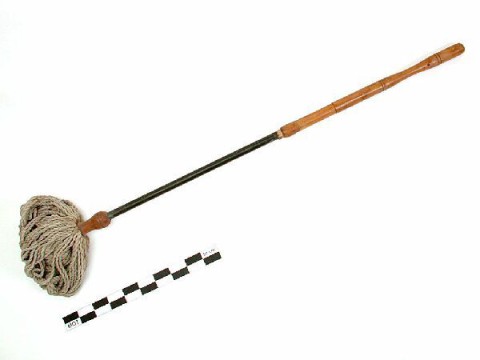
Mop
This text can only be consulted in Dutch
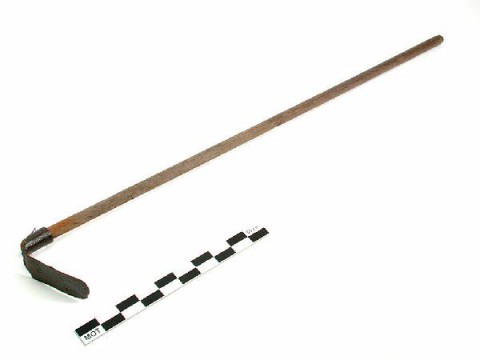
Mortar hoe
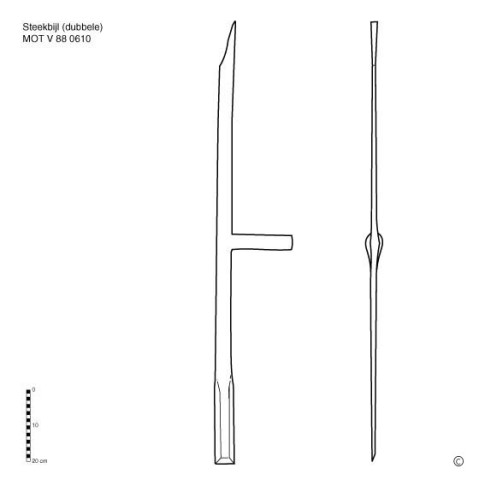
Mortise axe, double
This text can only be consulted in Dutch
<https://www.mot.be/resource/Tool/mortise-axe-double?lang=nl>
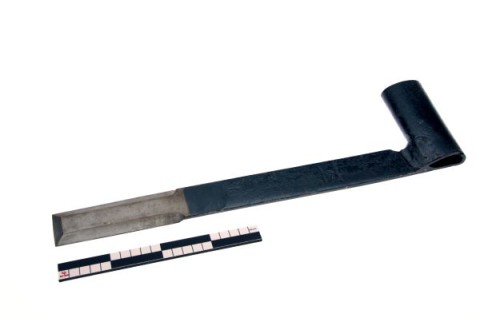
Mortise axe, single
Single mortise axe of a carpenter. For more information see the dutch
version.
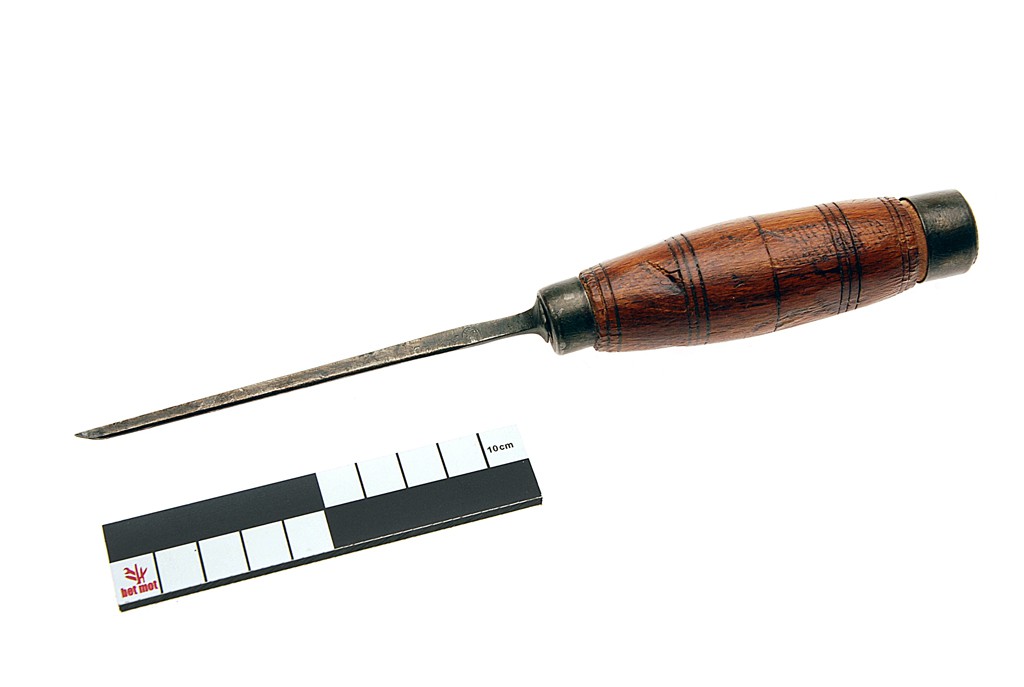
Mortise chisel
The mortise chisel is a wood chisel with one bevel and a neck. Its iron is
thicker than it is wide and usually tapers a bit at the wooden handle so
that it does not get stuck. There are different widths, about 0.1 to 2 cm.
The carpenter uses the chisel to cut out pinholes. The narrowest chisel
(1-3 mm) makes it possible to dig a groove or very narrow holes, for
example for a hinge (to be inserted). He is hit with the hammer. The turner
also uses a chisel, but without a neck, to make grooves. See also the hinge
chisel. [MOT]
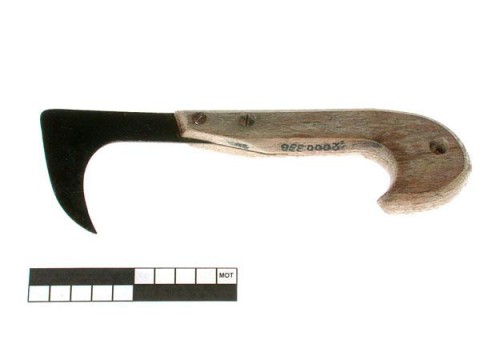
Moss scraper
Hand tool with a flat and slightly L-shaped blade (approx. 7 cm by 7 cm)
with a pointed tip, which has a fold on the back and front, and which is
fixed in a wooden or plastic handle. It is used in the garden to remove
dirt and weeds between tiles and stones (see also this tool); it can be
used by pulling and pushing. With the back of the blade you can also scrape
off soil from shovels or spades. See also this hand hook. [MOT]
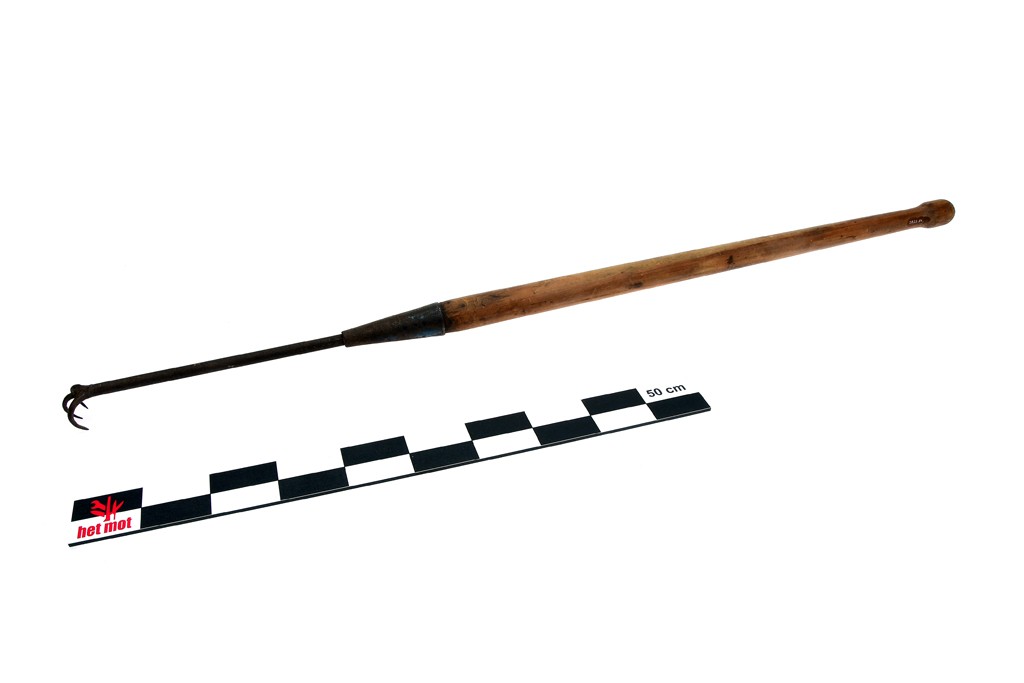
Moss scraper (osier)
This text can only be consulted in Dutch
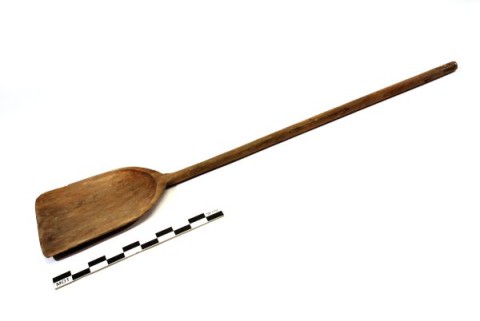
Mould board shovel
This text can only be consulted in Dutch
<https://www.mot.be/resource/Tool/mould-board-shovel?lang=nl>
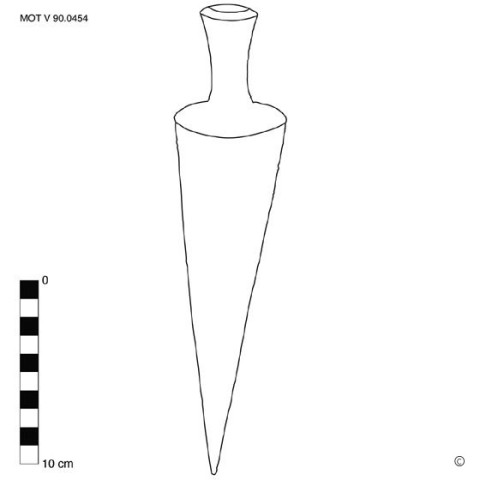
Mould for cardboard boxes
This text can only be consulted in Dutch
<https://www.mot.be/resource/Tool/mould-for-cardboard-boxes?lang=nl>
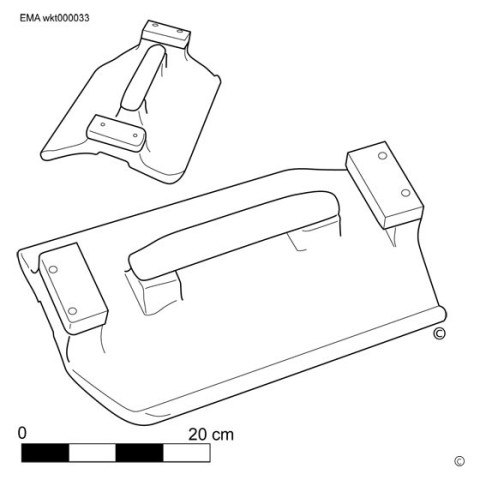
Mould for roof tiles
This text can only be consulted in Dutch
<https://www.mot.be/resource/Tool/1155?lang=nl>
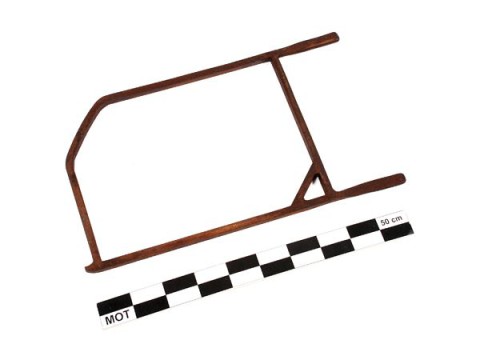
Mould for tiles
This text can only be consulted in Dutch
<https://www.mot.be/resource/Tool/1154?lang=nl>
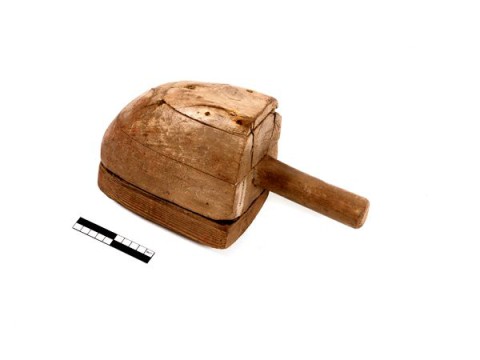
Mould for ventilation tile / Mould for pigeon tile
This text can only be consulted in Dutch
<https://www.mot.be/resource/Tool/1133?lang=nl>
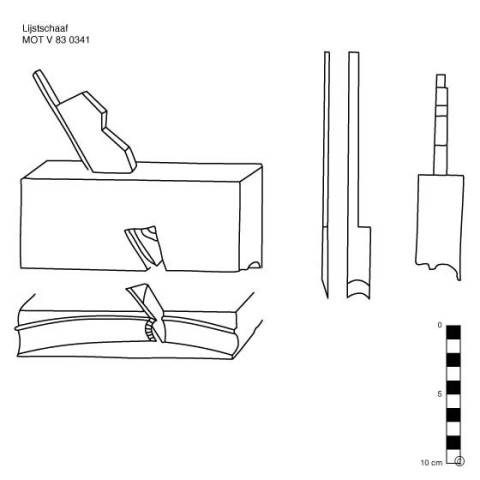
Moulding plane
This text can only be consulted in Dutch
<https://www.mot.be/resource/Tool/moulding-plane?lang=nl>
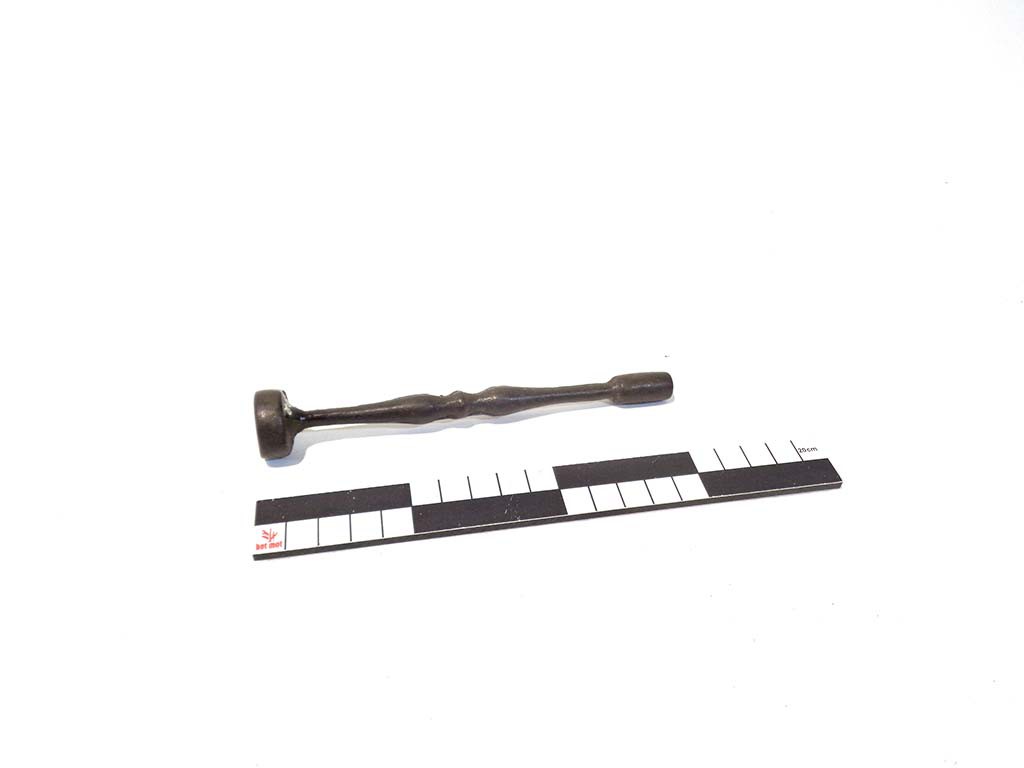
Moulding stamper
This text can only be consulted in DutchThe proper English name of this
moulding tool is yet unknown.
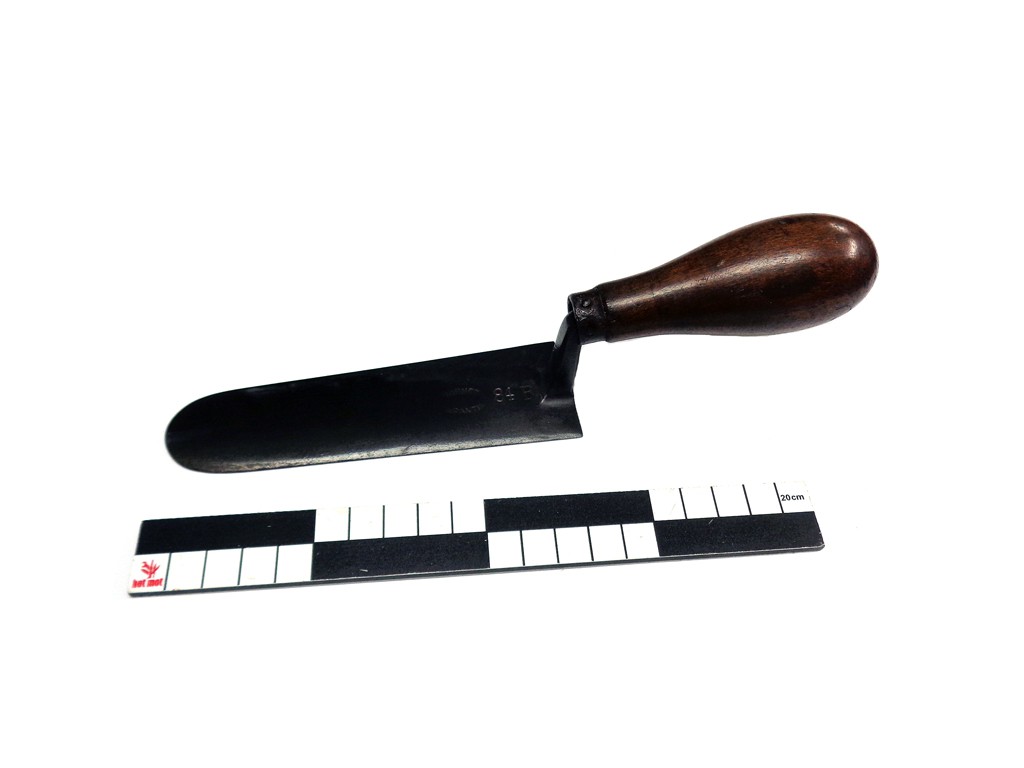
Moulding trowel
This text can only be consulted in Dutch
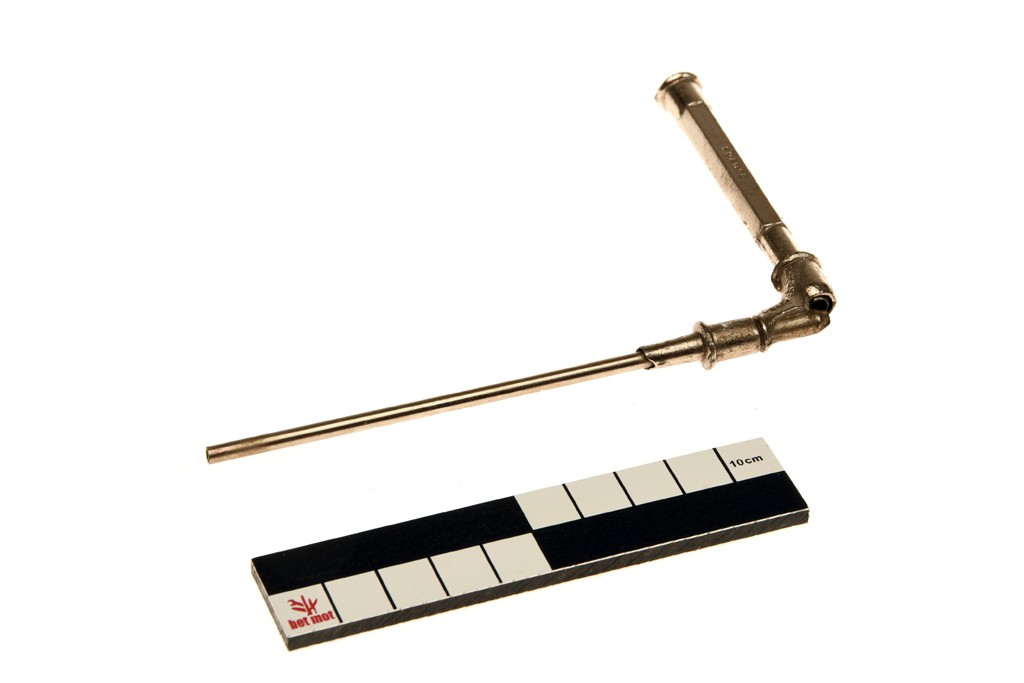
Mouth atomizer
This text can only be consulted in Dutch
<https://www.mot.be/resource/Tool/mouth-atomizer?lang=nl>
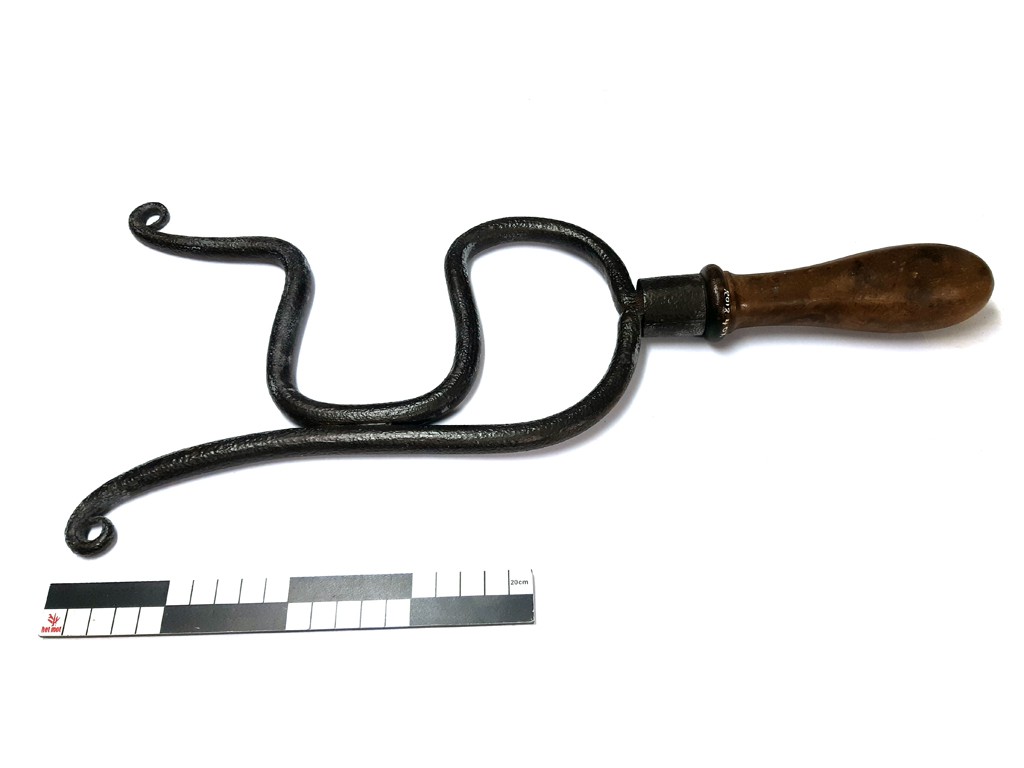
Mouth lyre gag
This text can only be consulted in Dutch
<https://www.mot.be/resource/Tool/mouth-lyre-gag?lang=nl>
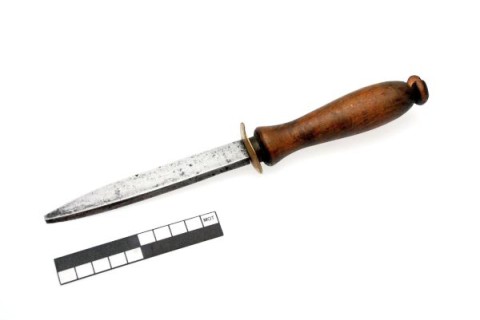
Mucus knife
This text can only be consulted in Dutch
<https://www.mot.be/resource/Tool/1162?lang=nl>
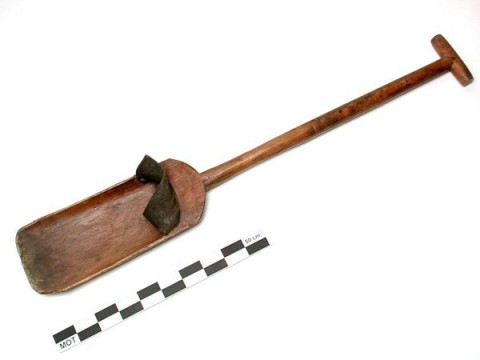
Mud scuppit
Usually wooden (approx. 40-60 cm x 15-20 cm), sometimes iron (approx. 25x35 cm) shovel (1) with raised edges and T-handle (approx. 65 cm) and usually a leather patch on top of the (wooden) blade. Sometimes a second handle is provided at the bottom of the handle (2). The wooden shovel is usually monoxile (except for the T-handle). The bosom shovel is used to scoop water or dredge from a ditch or liquid manure from a barge (3), also, by the brick and tile baker, to pour water over the clay during the preparation of that raw material. See also drag net, bleacher's shovel and sand shovel (brickmaker). [MOT] (1) SIRAG: 50. (2) Larousse Agricole: 1.523. (3) V.A.W.P.: 1.433.
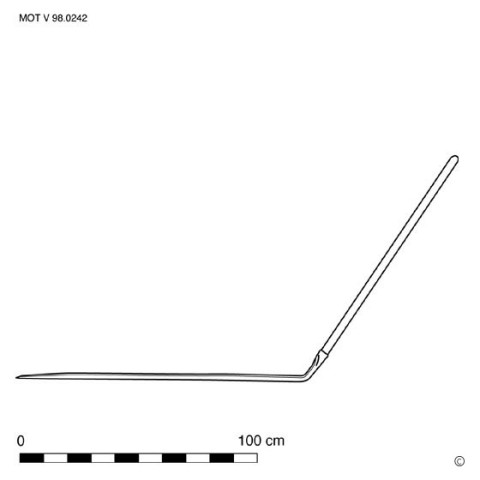
Mud-marking iron
This description of the mud marking iron can only be consulted in dutch.
[MOT]
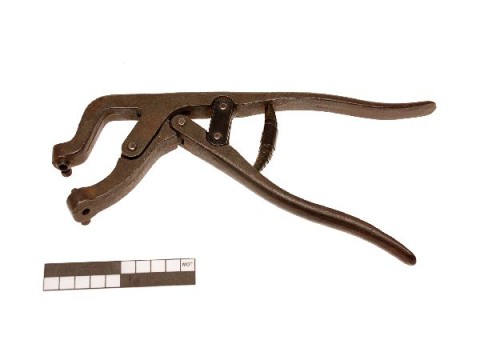
Mudguard punch
This text can only be consulted in Dutch
<https://www.mot.be/resource/Tool/1100?lang=nl>
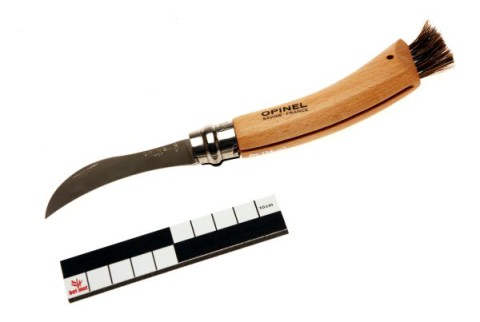
Mushroom collecting knife
Anyone who harvests edible mushrooms in the forest or in a meadow, cuts
them to the ground with a knife (except when it concerns agarics, which
have to be dug out). One cleans them on the spot. There is a special pocket
knife for this purpose, which is a compound tool, with a blade to cut off
the mushroom stem and a boar bristle brush to remove soil and dirt; that
brush may or may not be collapsible. On the back of the blade there are
sometimes teeth to remove coarser dirt or, according to some, the outer
layer of the skin (the 'cuticule') (1). [MOT] (1) http://www.opinel.com/
(January 2021).
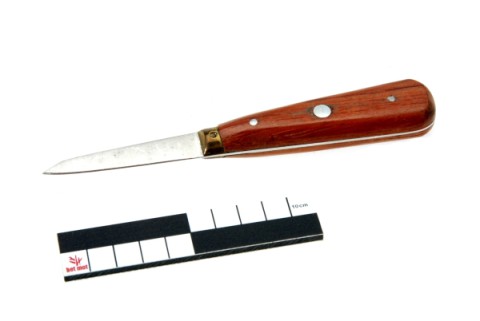
Mussel knife
This text can only be consulted in Dutch
<https://www.mot.be/resource/Tool/mussel-knife?lang=nl>
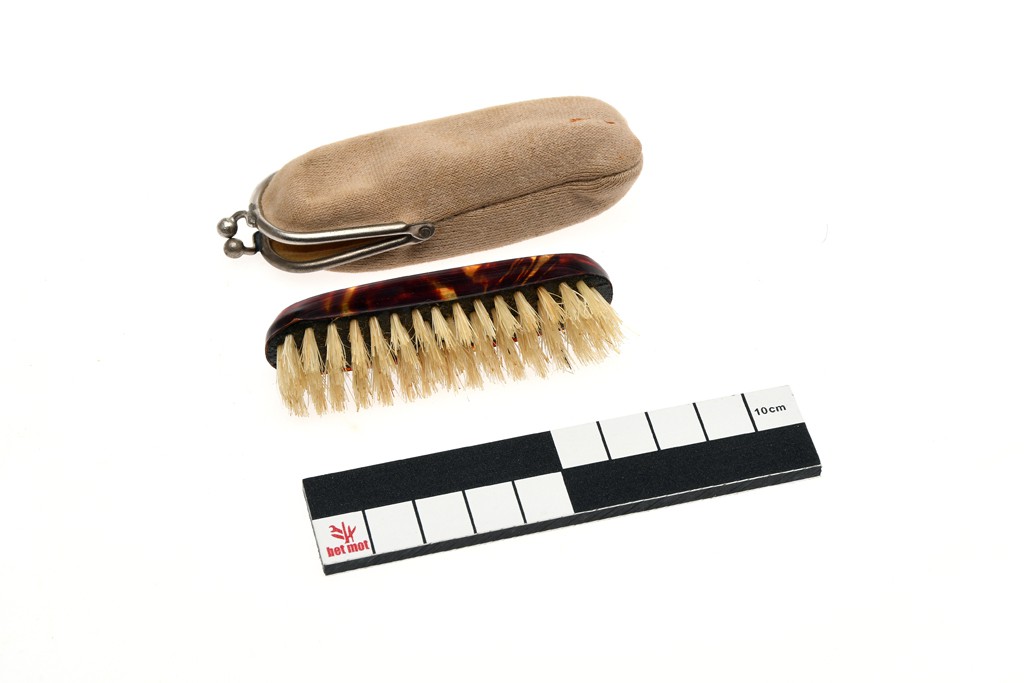
Mustache brush
This text can only be consulted in Dutch
<https://www.mot.be/resource/Tool/mustache-brush?lang=nl>
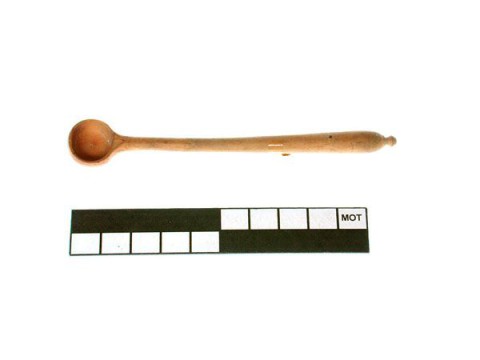
Mustard spoon
A small (approx. 10-15 cm long), spherical (approx. 1.5 cm diameter) wooden
spoon with which mustard powder can be served (1). For serving mustard in
pasta form, there are wooden, bone, ceramic, metal mustard spatulas or
spoons. [MOT] (1) According to CAMPBELL: 126, this spoon is used as a salt
spoon.
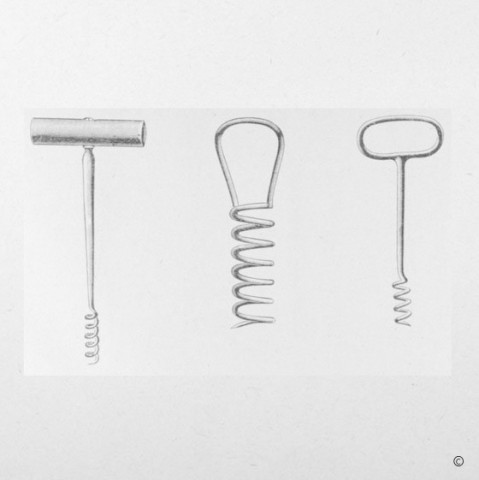
Myoma drawer
The myoma drawer is a manual tool consisting of a sturdy metal spiral and
an annular or straight handle, with which the surgeon removes a myoma, i.e.
a benign tumor consisting of smooth muscle tissue. To be distinguished from
the corkscrew. [MOT]
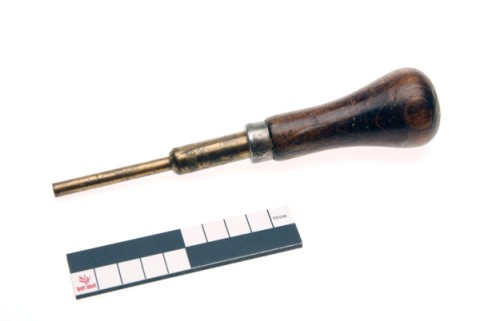
Nail driver
With the nail driver you can drive small nails without a hammer. It
consists of a metal hollow shaft with spring mechanism that sticks into a
wooden or plastic handle. The nail is inserted into the hollow shaft. By
giving a firm blow to the head - which is wider and rounded - by hand, the
nail goes into the material in one movement. [MOT]
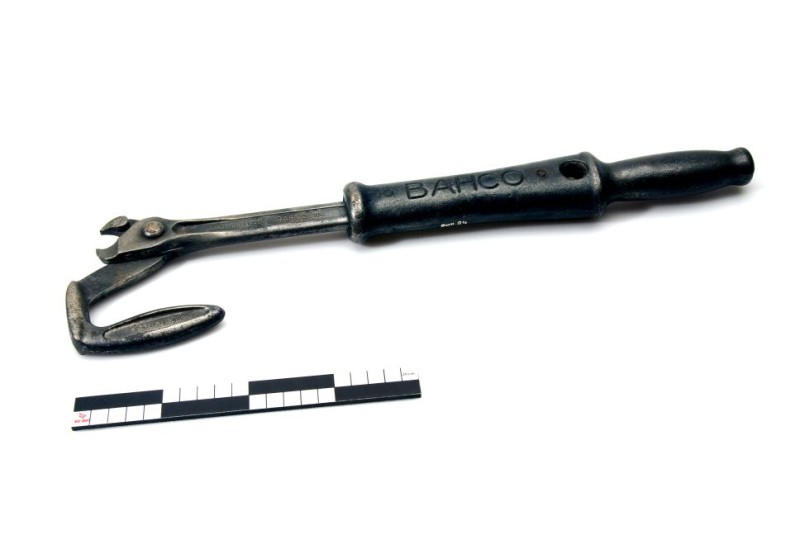
Nail extractor
Nail puller is a general term for different levers and pliers for pulling
out nails. The heavy versions are used by the shipwright, the lighter ones
mainly to open boxes. The lever can be compared to the crowbar. For the
same purpose the pincers or claw hammer are used by the carpenter. [MOT]
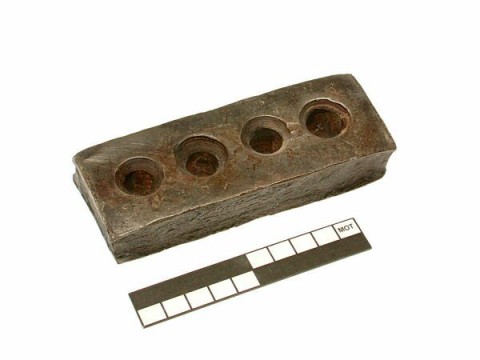
Nail header
This text can only be consulted in Dutch
<https://www.mot.be/resource/Tool/nail-header?lang=nl>
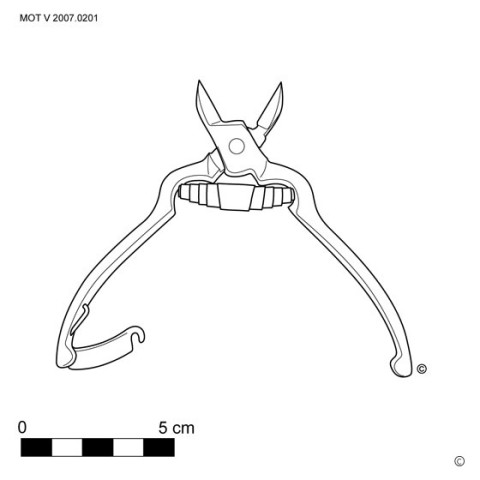
Nail tongs
Toenails can easily be cut with nail tongs. As with the pocket
nail-clippers, the jaws are sharp. The legs are crossed and sometimes a
spring on one of the legs ensures that the tongs open automatically. [MOT]
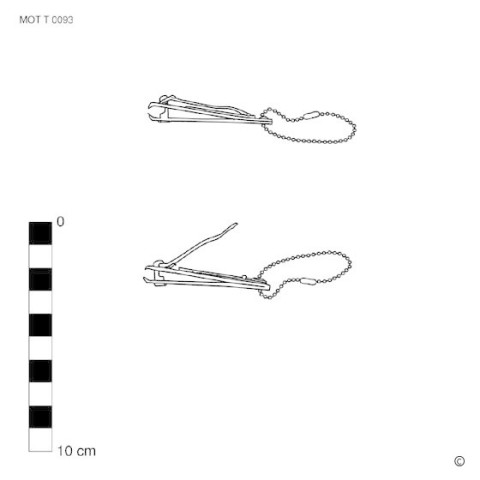
Nail-clippers
This text can only be consulted in Dutch
<https://www.mot.be/resource/Tool/nail-clippers?lang=nl>
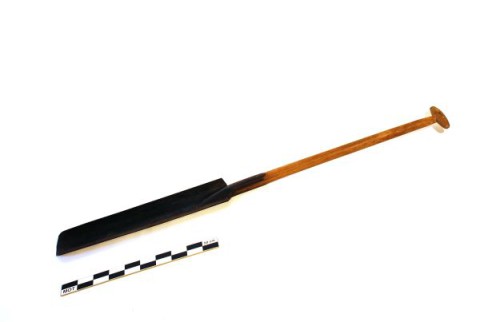
Narrow drain spade
This text can only be consulted in Dutch
<https://www.mot.be/resource/Tool/narrow-drain-spade?lang=nl>
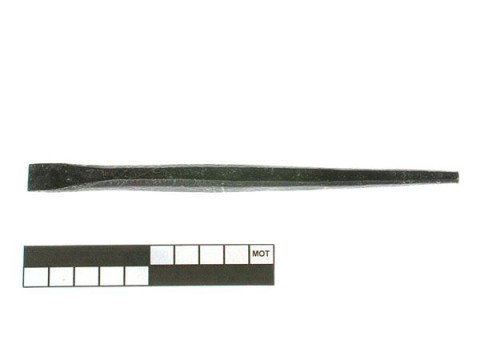
Narrow indented chisel
This text can only be consulted in Dutch
<https://www.mot.be/resource/Tool/narrow-indented-chisel?lang=nl>
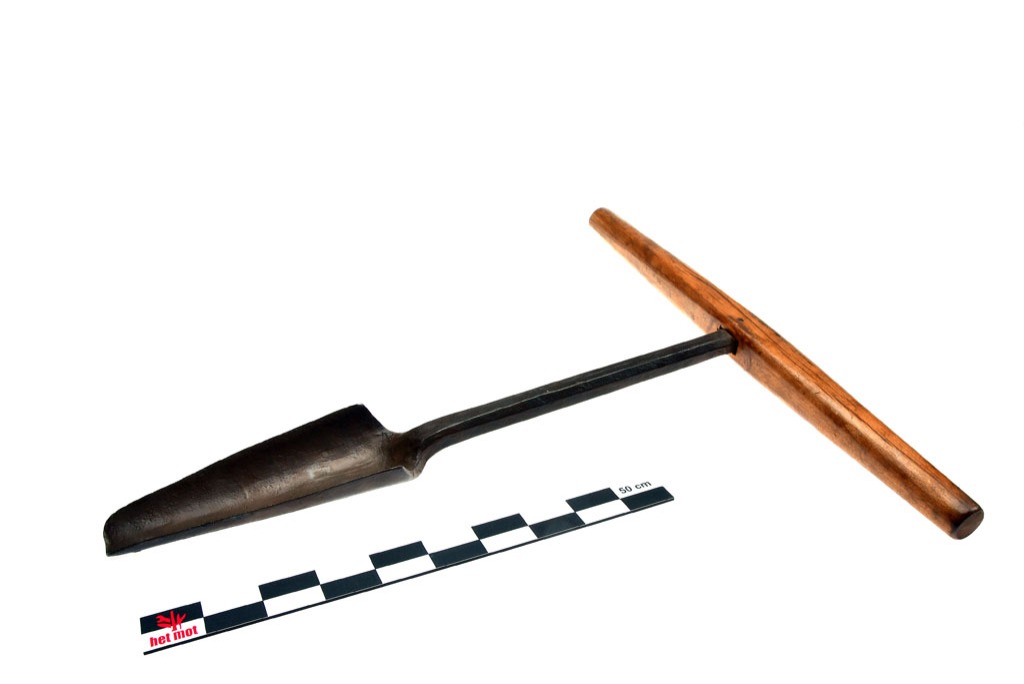
Nave borer
The description of the nave borer can only be consulted in dutch.
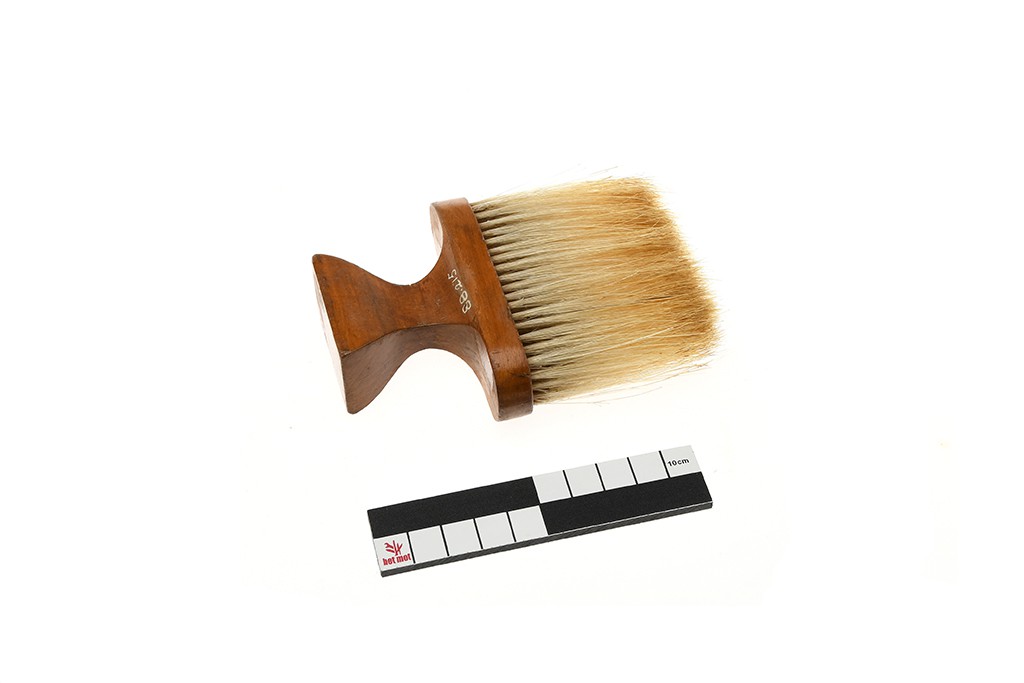
Neck brush
This text can only be consulted in Dutch
<https://www.mot.be/resource/Tool/neck-brush?lang=nl>
